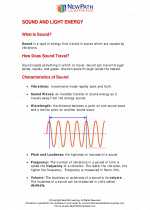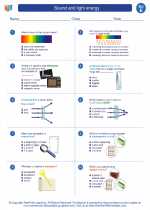Sound and light energy -> eukaryotic cells
What are Eukaryotic Cells?
Eukaryotic cells are complex cells that make up the tissues and organs of multicellular organisms. These cells contain a true nucleus, which houses the genetic material, and membrane-bound organelles that carry out specific functions within the cell.
Key Features of Eukaryotic Cells
1. Nucleus: Eukaryotic cells have a well-defined nucleus that contains the genetic material, including DNA and RNA.
2. Membrane-bound Organelles: These cells contain various membrane-bound organelles such as mitochondria, endoplasmic reticulum, Golgi apparatus, and lysosomes that perform specific functions.
3. Complex Structure: Eukaryotic cells have a more complex and organized structure compared to prokaryotic cells.
4. Cellular Division: Eukaryotic cells undergo mitosis for growth and repair, as well as meiosis for sexual reproduction.
Organelles in Eukaryotic Cells
Eukaryotic cells contain several organelles, each with specific functions:
- Mitochondria: Powerhouse of the cell, responsible for energy production through cellular respiration.
- Endoplasmic Reticulum: Involved in protein and lipid synthesis.
- Golgi Apparatus: Modifies, sorts, and packages proteins for secretion.
- Lysosomes: Contain enzymes for digestion and waste removal.
- Chloroplasts (in plant cells): Site of photosynthesis, converting light energy into chemical energy.
- Centrioles: Involved in cell division.
Comparison to Prokaryotic Cells
Eukaryotic cells differ from prokaryotic cells in several ways:
- Eukaryotic cells have a true nucleus, while prokaryotic cells do not.
- Eukaryotic cells are generally larger and more complex.
- Eukaryotic cells have membrane-bound organelles, which are lacking in prokaryotic cells.
Study Guide
To study eukaryotic cells, it is important to understand the structure and function of the nucleus, as well as the various organelles present in these cells. Additionally, understanding the process of cellular division, both through mitosis and meiosis, is crucial. Comparing eukaryotic cells to prokaryotic cells can also help in understanding their unique characteristics.
Key terms to focus on include: nucleus, mitochondria, endoplasmic reticulum, Golgi apparatus, lysosomes, chloroplasts, centrioles, mitosis, meiosis, prokaryotic cells.
Practicing with diagrams and interactive models of eukaryotic cells can aid in visualizing their structure and organization.
For more in-depth study, exploring the role of eukaryotic cells in specific tissues and organs of organisms can provide a comprehensive understanding of their significance in the functioning of living organisms.
Good luck with your studies!
.◂Science Worksheets and Study Guides Fifth Grade. Sound and light energy

 Activity Lesson
Activity Lesson
 Worksheet/Answer key
Worksheet/Answer key
 Worksheet/Answer key
Worksheet/Answer key
 Worksheet/Answer key
Worksheet/Answer key
 Worksheet/Answer key
Worksheet/Answer key
 Vocabulary/Answer key
Vocabulary/Answer key
 Vocabulary/Answer key
Vocabulary/Answer key
